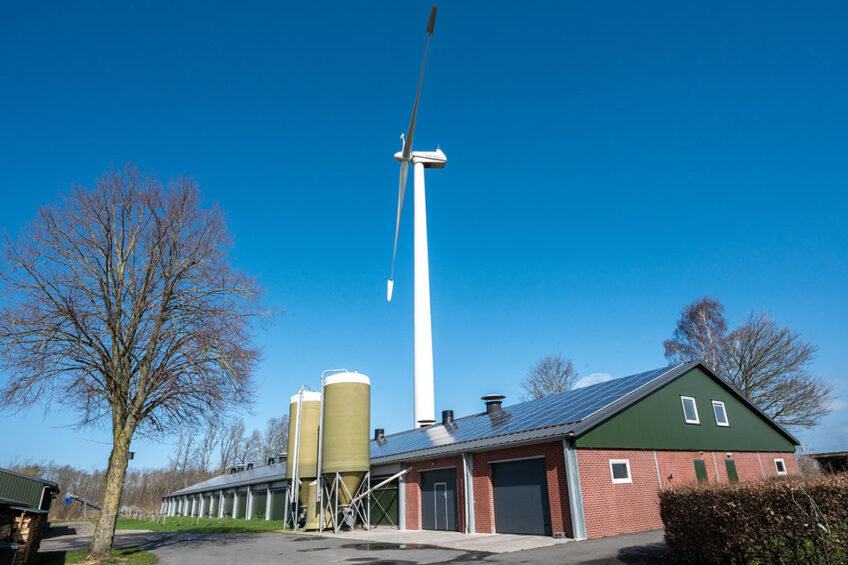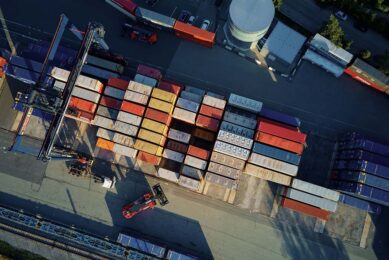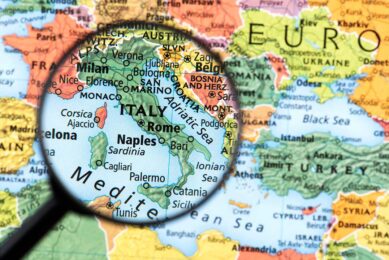EU survived immediate energy crunch, but worries remain for poultry

The storm has passed but the crisis is not yet over. In fact, it has turned into a new, less acute one. Energy market analysts believe it may require market players to invest in the necessary solutions to ensure energy security in the long run.
The recent energy price drop may provide some temporary relief for poultry farmers, as Europe has managed to avoid the worst possible scenario in winter 2022-2023, comments Aleksandra Svidler, consultant, economies and consumers at Euromonitor International. She adds that the present situation should not be taken for granted. She continues: “Things will not entirely return to the way they were in the past… The outlook for the European energy sector remains highly uncertain, as multiple downside and upside risks could contribute to price and supply fluctuations in the future.”
The new liquified natural gas (LNG) import terminals and infrastructure improvements, diversification of gas supply sources, efforts to reduce demand and weaker energy prices are all expected to bode well for the European energy sector this year. Nonetheless, Svidler claims that the region is not out of the woods yet, as without Russia’s supply it may face challenges in filling gas reserves. Competition from China, tight oil supply and the risks of extreme weather events also affect the outlook.
Similar fears are shared by Joel Estevinho, European poultry technical manager with Alltech. He points out that with too many factors in play in the energy market, the immediate future remains highly uncertain, let alone long-term forecasts. “Although energy prices have shown a downward correction in recent months, it is too soon to say that the energy crisis is over,” Estevinho notes. “Any improvement in the global economic outlook can have an effect on energy prices. The transition to cleaner energy sources may also be associated with greater costs, at least in the short term. Likewise, OPEC decisions and geopolitics can also have a significant impact on energy prices,” adds Estevinho.
Inflation bites
The fundamental problem associated with fluctuations in the energy market is that this largely contributes to inflation, making everything a bit more expensive. On top of this, as last year showed, even after the energy prices subside, operational costs will not necessarily fully follow the same pattern. Estevinho recalled that last year’s rally in the energy market was truly outstanding. For instance, in Italy, there was a year-on-year increase of about 80% in energy costs for poultry farmers.
“To this figure, we must add the generalised inflation of other farm inputs, which the global rise in energy costs has also contributed to, the increase in logistics costs as well as the sharp rise in the price of processing plant inputs, like energy and carbon dioxide,” says Estevinho. The price of feed is still an essential issue for European poultry producers, he notes. Estimating that despite a slight decrease since the beginning of the year, prices are still 50% above normal levels. There is also a long list of factors driving up operational costs, which are not related to the energy price dynamics.
Dwindling margins
Skyrocketing costs have inflicted much pain on poultry producers, and there are signs that the picture is gloomier in some parts of the EU than in others. This year, the poultry industry in the Czech Republic may become loss-making for the first time since the country joined the European Union almost 2 decades ago, says Martin Pýcha, chairman of the Czech Agricultural Union.
In the wake of soaring costs, some Czech farmers even had to scale back operations. “We finished our last flock in December last year and re-started production 2 and a half months later in mid-March. If we had fattened chickens during the winter, I estimate that we would have lost about 500,000 Czech crowns [US$23,500],” says Jindřich Kořínek, vice-chairman of the Borovany Agricultural Cooperative in Českobudějovick, Czechia.
On the Czech market, the price of feed jumped by 50%. At the current energy tariffs and feed prices, running a poultry farm could generate losses between 1 and 2 million Czech crowns per year (US$47,000 to US$94,000), Kořínek says, adding that the company had never expected the profitability of chicken businesses to dive so far below the break-even point.
Czech farmers believe that they find themselves at a disadvantage compared to poultry companies in other European countries. “Compared to Polish farmers, we have much lower national subsidies. Polish farmers receive support for the purchase of fertilisers, for example. There is nothing like that in our country. Their government supports them either by reducing VAT or by subsidising the purchase of energy and fuel. Our prices are much higher. Naturally, that puts us in a much more complicated and difficult position in the competitive environment,” says Pýcha.
Green transition picks up the pace
Despite the recent easing of energy prices, businesses in Europe are expected to continue investing in energy-efficient solutions and renewable energy sources. Last year, some European poultry farmers invested in improving the energy supply, for example, by installing rooftop solar panels or building biogas plants. Analysts expect this trend to gain further momentum over the next few years.
According to Euromonitor International’s ‘Voice of the Industry: Sustainability 2023’ survey, 70.7% of companies in Western Europe plan on investing in energy-related sustainability initiatives. When specific climate-related activities were analysed, more than half the respondents in Western Europe said their business is currently investing in or planning to invest in energy efficiency and energy use optimisation, while 49.1% of companies are focusing on switching to renewable energy.
Scaling up and accelerating the deployment of renewable energy sources remains essential to decrease the EU’s reliance on imported fossil fuels, Svidler states. According to the International Renewable Energy Agency (IRENA), the total renewable energy capacity in the EU surged by over 10% to 570 GW year-on-year in 2022, while, for the first time, wind and solar power overtook gas in Europe’s electricity mix.
To further encourage energy transition in the poultry industry, the European Commission recently proposed revising existing market standards for a number of agri-food products which will see solar panels permitted in areas used for free-range egg production. The Commission notes that this move would encourage a greater supply of energy from solar renewable sources. The changes, the Commission says, will help customers “make more informed choices for a healthier diet and contribute to preventing food waste”.
These investments could seem risky given the profitability problems farmers face, but analysts are confident that they will eventually pay off over time. “Although rapidly rising interest rates are expected to drive up the cost of financing, the push for more climate-friendly agricultural practices from policymakers will continue to provide support for renewable energy investments over the medium to long run,” Svidler concludes.
 Beheer
Beheer











 WP Admin
WP Admin  Bewerk bericht
Bewerk bericht